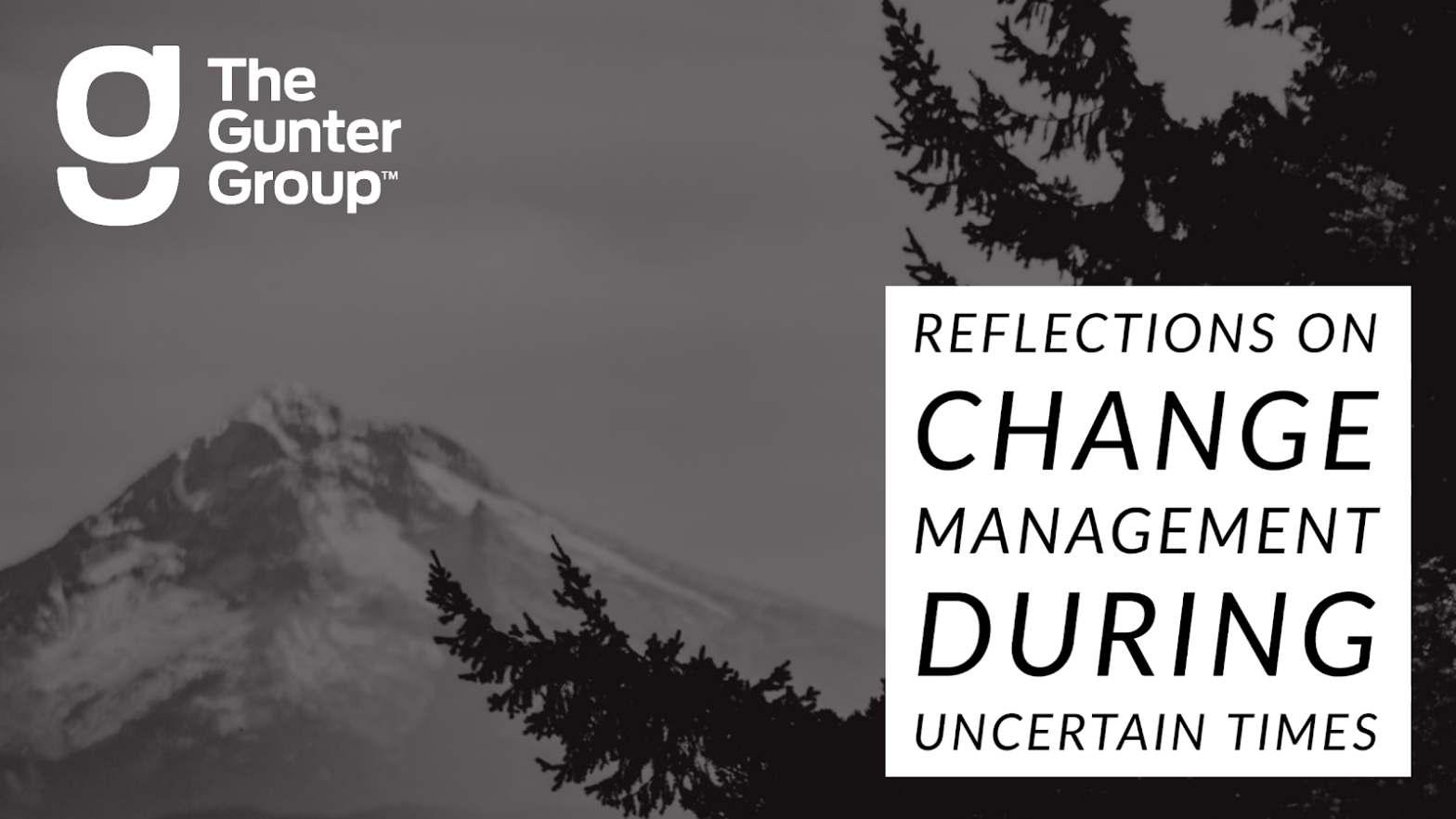As a result of the COVID-19 pandemic, organizations have had to make tough choices and “hit the pause button”, delaying projects and strategic initiatives. We are now seeing enterprises reinstating their paused projects and initiatives, but in a changed world, where challenges such as limited and/or remote staff, constrained budgets, and emerging competing priorities need to be factored into the mix.
Tag Archives: Bend
AGILE & THE BATTLE FOR BETTER BUSINESS
Agile has yet to have as meteoric an effect on the broader business world as it has in all-things-tech, but this change is on the horizon. In this article, we will explore several simple means for the application of agile in non-tech environments.
REFLECTIONS ON CHANGE MANAGEMENT IN UNCERTAIN TIMES
The Gunter Group hosted the ACMP Pacific Northwest chapter’s monthly Coffee Chats in April, May, and June. Just as everyone was figuring out how to deal with so many things changing, we facilitated a three-part webinar series entitled ‘Reflections on Change Management in Uncertain Times’.
REFLECTIONS ON CHANGE MANAGEMENT IN UNCERTAIN TIMES: PART THREE
The Gunter Group hosted ACMP Pacific Northwest’s June Coffee Chat and last session in our series on ‘Reflections on Change Management in Uncertain Times’.
TGG FACILITATED APPLIED AGILE PANEL DISCUSSION
A few weeks ago, The Gunter Group facilitated a panel discussion at one of our clients (a global footwear and apparel company), which focused on Agile methodology application within their organization.
TGG HOSTS ACMP’S JUNE COFFEE CHAT
We invite you to join us on June 12th for ACMP Pacific Northwest’s monthly Coffee Chat as we wrap up our three-part series around ‘Reflections on Change Management in Uncertain Times’.
REFLECTIONS ON CHANGE MANAGEMENT IN UNCERTAIN TIMES: PART TWO
The Gunter Group hosted ACMP Pacific Northwest’s May Coffee Chat and discussed topics with the change management community such as: How are we adapting in these uncertain times?
LEADING THROUGH CRISIS, OUR VETERANS’ PERSPECTIVE
At The Gunter Group, we are fortunate to have several military veterans on our team who have deep experience leading in times of crisis. They sat down with one of our consultants, Laura Emily, for a conversation about how they are leaning on their backgrounds in the service to navigate our current environment.
5 TRAITS TO LOOK FOR WHEN RESOURCING CRITICAL, QUICK TURN PROJECTS
Whether you’re faced with a crisis now, or looking to be prepared for the future, check out these 5 traits that keep organizations moving forward in critical, quick turn projects.








